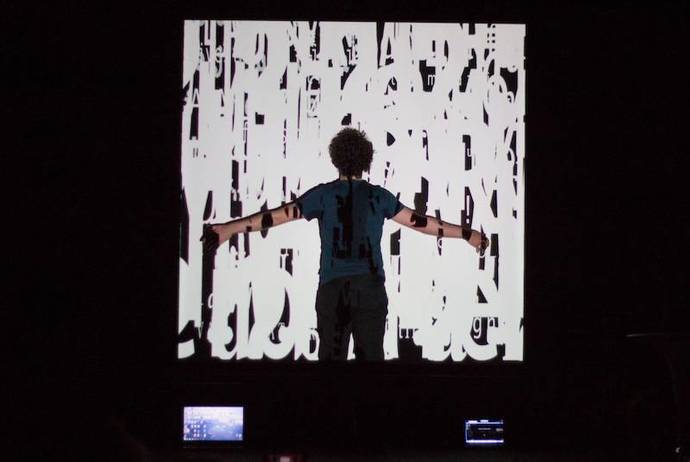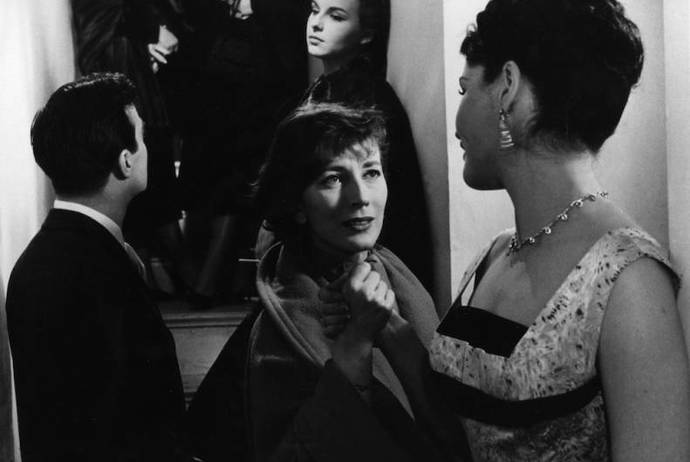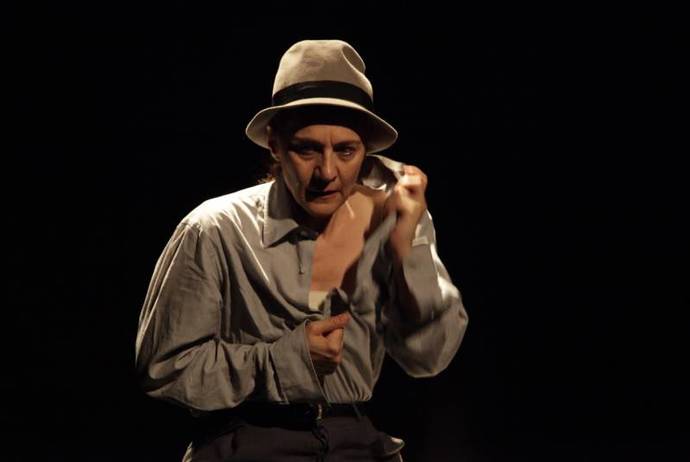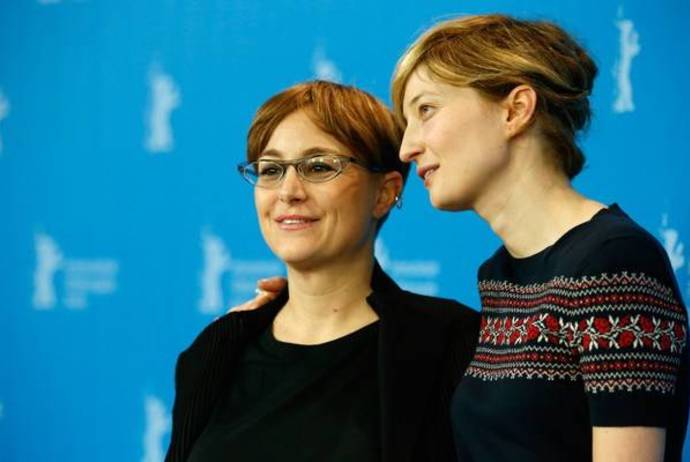“We are awarding a film that is exquisite in its broadness and its intimacy, with a truly original story that touches on gender identity and oppression in a way that members of this jury have rarely seen before. The film constantly surprised us and made us question our own positions through a confident, passionate, and beautifully nuanced vision that showed a real respect for the audience.” With these words the Jury of the 2015 Nora Ephron Prize at the 14th edition of the Tribeca Film Festival awarded first prize to Italy's Laura Bispuri and her film Sworn Virgin (Vergine Giurata in Italian).
Sworn Virgin, whose U.S. rights have been acquired by Strand Releasing for a run at the end of 2015 or the beginning of 2016, is a co-production (Albania, Germany, Italy, Kosovo, Switzerland) that was penned by Bispuri herself with collaborator Francesca Manieri. Based on Elvira Dones’ novel “Sworn Virgin,” the film brings to light the issue of Albanian sworn virgins, “women who take a vow of chastity and wear male clothing in order to live as men in the patriarchal northern Albanian society.” This is the tale of Mark, played by Alba Rohrwacher, who used to be a girl with long black hair called Hana. The film follows his voyage to Italy where he is reunited with sister Lila, played by Flonja Kodheli, and meets her inquisitive daughter, Jonida, played by Emily Ferratello. In this indefinite northern town he slowly reaches adulthood and discovers his true nature, where both of his identities melt together.
Sworn Virgin was shot in Bolzano, although the setting of the film is unspecified, in four weeks and two days, in a language unknown to the director who had to trust translators for her script and interpreters on set. Laura Bispuri is inspired by the people she sees on the streets, builds strong bonds with her actors and believes that the beauty of cinema is that is transcends language barriers.
We met her at Tribeca after a successful screening of her film.
How have audiences American welcomed your film?
“The reaction here has been more than amazing. Our screenings were all successful, and I noticed that the film is watched with great attention as it transmits a certain tension. Every time I am in the cinema during a screening I can feel the audience's emotions at the end and that makes me proud. At The Hong Kong International Film Festival we were awarded the Firebird Award, the top prize in the young filmmakers’ competition section, and that showed us that audiences of a completely different cultural background got really involved as well.
It was a bet I made with myself and I won! I'm always a bit concerned because the film is in two different languages, it represents two different worlds but the story has proved to be universal. My work was to start from a very specific story and give it a universal meaning and I think I was successful.”
After each screening there is always a Q&A, what do people ask you all the time?
“There is a lot of curiosity about the tradition of Sworn Virgins because it is not a well known topic. People want to know if they really exist, who are they and what do they do, why? I didn't know of them until I read Elvira Dones’ novel. I immediately dove into it and felt the need to tell this story; I went to Albania and I studied different texts. I am glad the film has raised more awareness on the issue, films do that.”
I heard there is a real sworn virgin in the film...
“Yes there is one, the character named Pal. At the very beginning you see this man but he's actually a woman, a real sworn virgin. Getting her involved was not too difficult, we met and spent time together. We immediately liked each other and he accepted to be in the film. Usually sworn virgins are not so approachable, they are complex creatures. When you are with them they keep you at a distance, they don't let you in.”
How is working in a foreign language?
“We wrote in Italian, had it translated in Albanian and then they worked on the dialogues and put them in the dialect spoken on the mountains. While filming we had two girls who were checking that everything was correct. Alba learned Albanese and natives always compliment her because her accent is basically perfect. It was not easy because on set we spent more time on each take, just to make sure the language was correct...even the tone something was said in had to match the words. I didn't feel helpless even though I did not have total control, but some things can be understood even without words.”
In the film there are numerous silences, pauses, and gazes, yet they speak a lot
“There aren't only words to communicate, there are feelings, moods. I work on layers. When we met earlier you told me the film made you think, it stayed with you and you still think about it days later. What I try to do is to work on different levels.”
You mentioned this film is about the thawing of a body. Mark's. What starts this process?
“The interior reason why Mark leaves the mountains behind is because he finally starts listening to his body... a body that is trying to push through. When Hana decided to become Mark, she turned her body into a stone. But as time goes by this body wants to be heard. In Italy, his body starts hitching, even reacting to the bandages he keeps around his breast. There are many different elements that bring this thawing: another one is his relationship with Jonida, a curious teen who asks a lot of questions and helps him out. When Mark lived in the mountains he lived in a state of apnea, and Jonida, who is a swimmer, lives in a state of apnea as well. The relationship with Lila is also important as it is a reminder of a childhood lived as a girl. With Bernard, the pool boy, Mark experiences a physical awakening but notice, Bernard is no Prince Charming, Mark “saves” himself. The pool itself is important as are all the swimmers it welcomes... half naked bodies in colorful suits. Mark is surrounded by bodies and he observes them. Mark is a creature who in Italy faces numerous stimuli that have an effect on him. In the end he doesn't pick one or the other, male or female, he is both Mark and Hana. Getting rid of Mark would have been wrong. So we don't see Hana wearing high heels in the last scene of the film, but a changed Mark.”
What hitches the most, the bandages or the bra, once he puts it on?
“That bra embodies Mark's difficulty. He wants to try, he wants to change but it is also scary and difficult. After years and years living in a different body it is impossible to adapt immediately.”
Albania Vs. Italy. One is very definite, the other unspecified.
“In this story the setting is very influential. The role of both countries is very specific, nonetheless this is the story of Mark and of his interior journey. The northern Italian city helps me maintain the audience's concentration on the character with no distractions.”
That way we all can slowly follow Mark as he integrates into contemporary society as his transformation progresses. And feel with him and for him.





































